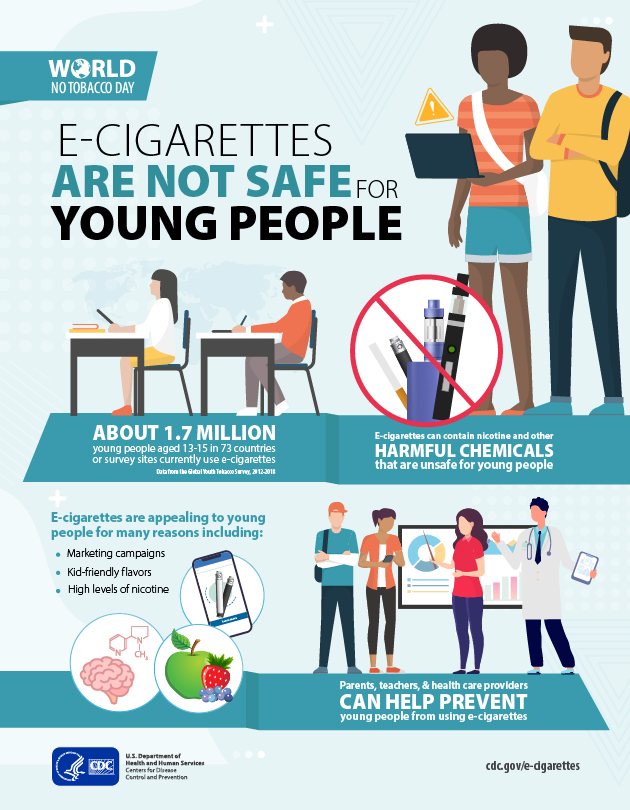 Data from the Global Youth Tobacco Survey (GYTS) show that at least 14 million young people aged 13 to 15 years across the world use tobacco products. The tobacco industry spends tens of billions of dollars each year on global advertising, promotion, and sponsorship.
Data from the Global Youth Tobacco Survey (GYTS) show that at least 14 million young people aged 13 to 15 years across the world use tobacco products. The tobacco industry spends tens of billions of dollars each year on global advertising, promotion, and sponsorship.
Studies show that young people are more likely to smoke when they are exposed to cigarette advertising and promotional activities. In many countries, tobacco is promoted in the media and other places that attract young people—such as movies, the Internet, fashion magazines, and music and sporting events.
To help reduce tobacco use around the world, the World Health Organization’s Framework Convention on Tobacco Control (WHO FCTC) has called for a total ban on direct and indirect tobacco advertising, promotion, and sponsorship. This action can sharply reduce tobacco consumption and protect people, particularly young people, from starting to use tobacco.
In the last 10 years, progress has been made in global tobacco control efforts, including reducing tobacco product advertising. But progress has varied across countries, and more work is needed to protect young people from the health risks of using tobacco products and being exposed to secondhand smoke.
CDC and WHO Work With Partners to Collect Youth Data
To reduce tobacco use among young people, researchers and decision makers need reliable data. The Centers for Disease Control and Prevention (CDC) and the WHO work with partners across the world to provide these data through the GYTS. The GYTS interviews young people aged 13 to 15 years in schools. It has interviewed nearly 2 million students from 188 countries since it began in 1999. Students are asked about their use of tobacco products, as well as their exposure to secondhand smoke, their knowledge of the harms of tobacco, their exposure to tobacco ads, and other important tobacco control information.
Data from the Global Youth Tobacco Survey show about 14 million young people aged 13 to 15 years in 157 countries or survey sites use tobacco products.
In 2019, CDC and WHO introduced Tobacco Questions for Surveys of Youth (TQS-Youth). This standard set of questions from the GYTS can be added to other surveys. The WHO FCTC recommends that countries monitor tobacco use at least every 5 years. Adding the TQS-Youth questions to other surveys allows tobacco use among young people to be monitored more often. The resulting data can be used to develop tobacco control programs and policies that protect young people from the harms of tobacco all across the world.
Emerging Products Bring New Challenges
The tobacco landscape is constantly changing. Tobacco control strategies must continue to adapt to protect people from the harms of tobacco use. Emerging products like e-cigarettes and heated tobacco products have created a challenge for fighting the global tobacco use epidemic.
E-cigarettes are electronic devices that produce an aerosol that is inhaled by the user. The aerosol usually contains nicotine and other harmful substances. The liquid used in these devices sometimes use flavors, such as fruit or candy flavors. Heated tobacco products are devices that heat tobacco to produce emissions that contain nicotine and other harmful chemicals that are inhaled by the user. These products sometimes include flavors.
The use of any tobacco product, including e-cigarettes, is unsafe for young people.
Between 2012 and 2018, seventy-three countries or survey sites collected data on e-cigarette use through the GYTS. The data show that about 1.7 million young people aged 13 to 15 years currently use e-cigarettes. E-cigarettes typically containing nicotine, which is highly addictive and can harm brain development.
Young people who use e-cigarettes may be more likely to go on to use traditional cigarettes than young people who never used e-cigarettes. E-cigarettes are appealing to young people for various reasons, including advertising, kid-friendly flavors, and high-nicotine levels.
How Parents, Educators, and Health Care Providers Can Help Protect Youth
Parents, educators, and health care providers all play an important role in protecting young people from the use of all tobacco products, including e-cigarettes.
For example, they can serve as role models by not using tobacco themselves. They can talk to young people about the harms of tobacco. Parents and family members can adopt tobacco-free policies at home. Educators and teachers can adopt and enforce tobacco-free policies at school. And health care providers can counsel young patients against the use of any tobacco product.
Learn more at https://www.cdc.gov/globalhealth/index.html
